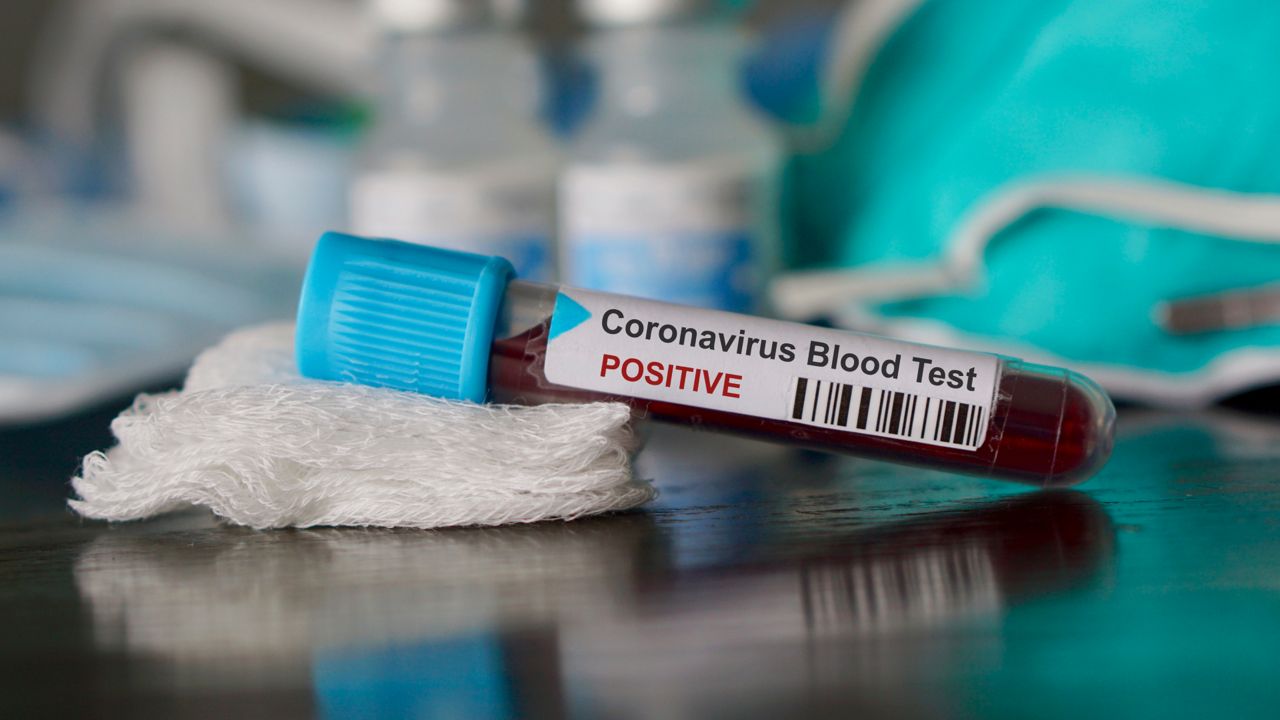SANTA ANA, Calif. (CNS) — Orange County's hospitalizations for COVID-19 continued its uptick Thursday as more than 300 additional infections were reported.
The county reported 304 more COVID-19 infections, hiking up the cumulative to 260,289.
Hospitalizations increased from 143 on Wednesday to 149, with the number of intensive care unit patients jumping from 35 to 39.
Orange County Board of Supervisors Vice Chairman Doug Chaffee told City News Service that the board will consider accepting a $4.5 million state grant to help with coronavirus vaccine outreach.
Access to vaccines is not an issue, Chaffee said, but outreach is still important as officials grapple with convincing the vaccine-resistant population to get inoculated.
"With the delta variant hitting people not vaccinated, that's where we need to go," Chaffee said. "This is state money and we should take advantage of it."
As of Thursday, the county reported that 1,876,853 residents are fully vaccinated. The number of residents who have received Pfizer or Moderna and are fully vaccinated is 1,754,729, and the number of those who received the one-dose Johnson & Johnson vaccine and are fully vaccinated is 122,124.
The county reported there are 214,245 who have received at least one dose of the two-dose Pfizer or Moderna vaccines.
Overall, Orange County is "doing better than our surrounding counties," Chaffee said.
The state grant will help county officials provide administrative support for nonprofits and other community organizations to hold vaccination events.
"We want to be sure our nonprofit partners out in the community have sufficient funding to do their job," Chaffee said.
Chaffee noted that the county government was doing about one-third of the vaccinations with healthcare providers doing the rest.
"We can't just rely on people dropping by the drug store," Chaffee said of the importance of continuing outreach. "It's too serious. We have to do outreach and go through the barriers. I think we need to do that going forward with our recovery. We can't take a step back and, like it or not, the only answer is getting a shot."
County officials are not considering any sort of other measures like a mask mandate for indoor activity or shopping for everyone, including the vaccinated, Chaffee said.
"Basically, this is delta," Andrew Noymer, an epidemiologist and UC Irvine professor of population health and disease prevention, said Wednesday of the rising number of cases.
"The fall has come early because we have a more transmissible variant."
According to the Orange County Health Care Agency, the most dominant variants in the county in recent weeks have been the delta, Alpha and Gamma variants. Delta and alpha are considered much more highly contagious. Experts say the vaccines all provide a high degree of protection against infections and will prevent serious illness.
Public health professionals had expected a mild summer because of vaccination rates and more outdoor activity, but that cases would increase when the temperature drops and more people head indoors and children return to school.
"COVID was ultimately going to be a seasonal phenomenon," Noymer said. "`But last summer, we were punching through the seasonality because it was new and we were native to it — no immune system experience.
"But this summer, we have a lot more vaccinated and some other people who are survivors of natural infection, so you would expect less COVID, but it's punching through again because we have this new variant that is highly spreadable."
According to the weekly averages released on Tuesday, Orange County's case rate per 100,000 residents increased from 2.6 to 4.9 and the test positivity rate jumped up from 1.8% to 3.3%.
The county's Health Equity Quartile rate, which measures the disadvantaged communities hardest hit by the pandemic, increased from 1.9% to 3.4%.
The state releases weekly averages on Tuesdays.
The county had recently been reporting coronavirus statistics once a week, but switched Monday to a more frequent schedule of releasing numbers every weekday in light of the increasing number of infections.
There were two new fatalities logged on Thursday. The cumulative death toll rose to 5,138.
One of the fatalities occurred on July 9, raising the death toll for this month to two. The other fatalities occurred in February.
The death toll for June is 15; 22 for May; 43 for April; 198 for March; 611 for February; 1,563 for January — the deadliest month of the pandemic — and 967 for December, the next deadliest.
Noymer said the death rate should increase in a few weeks or a month, but not at the level from the winter.
"I do expect the death rate to decline somewhat because the older people tend to be more vaccinated, so the cases are skewing younger," Noymer said.
About 95% of the patients hospitalized are unvaccinated, according to county officials.
The high number of unvaccinated patients is "hopefully a reminder to the public that when they seek the risk of COVID, they would ask questions, get educated and consider the voluntary vaccine," Orange County CEO Frank Kim said Monday.



